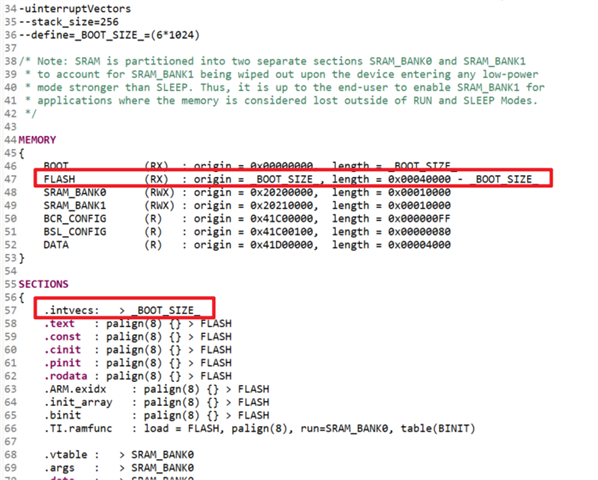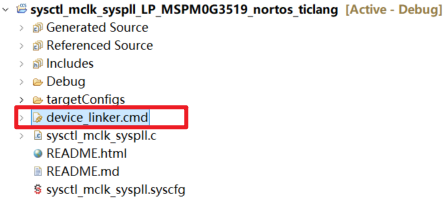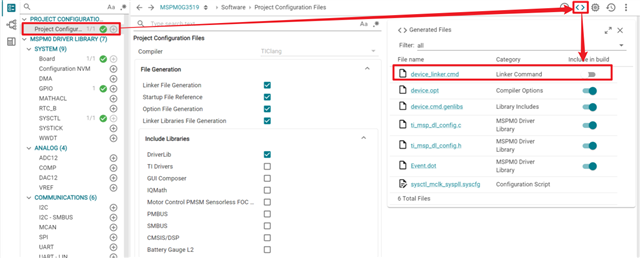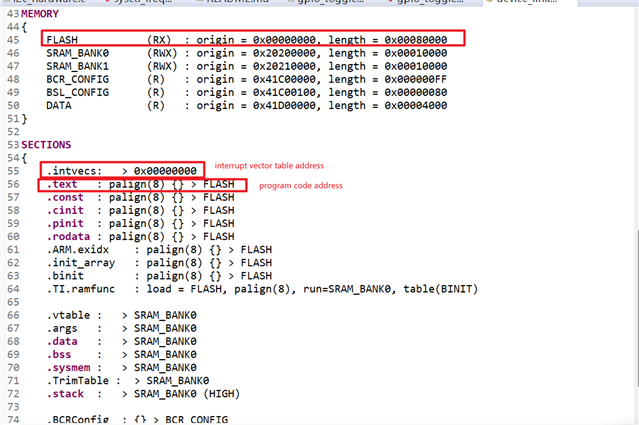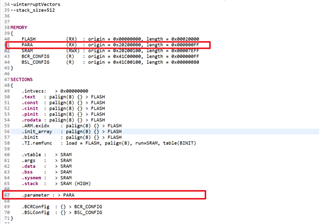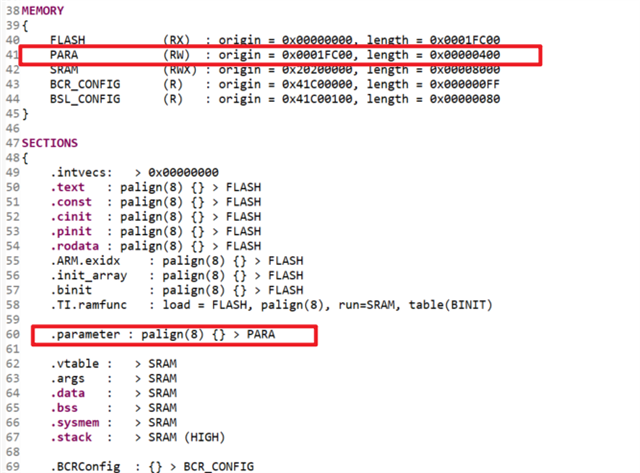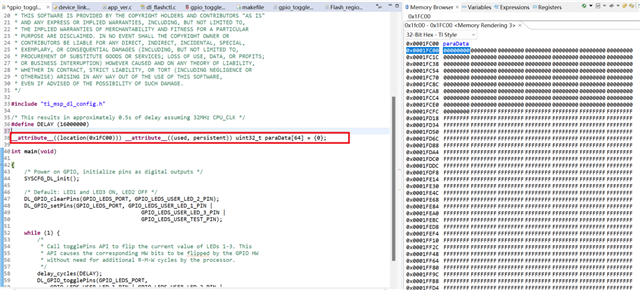Other Parts Discussed in Thread: SYSCONFIG
Tool/software:
Hi team,
My customer is thinking to set a specific region for their application code.
Let's say they want to place their code starting from 0x0000001 to 0x00008000 flash region,
how should they change the code in sections of device_linker.cmd?
Default: .text : palign(8) {} > FLASH
Best regards,
Kenley


